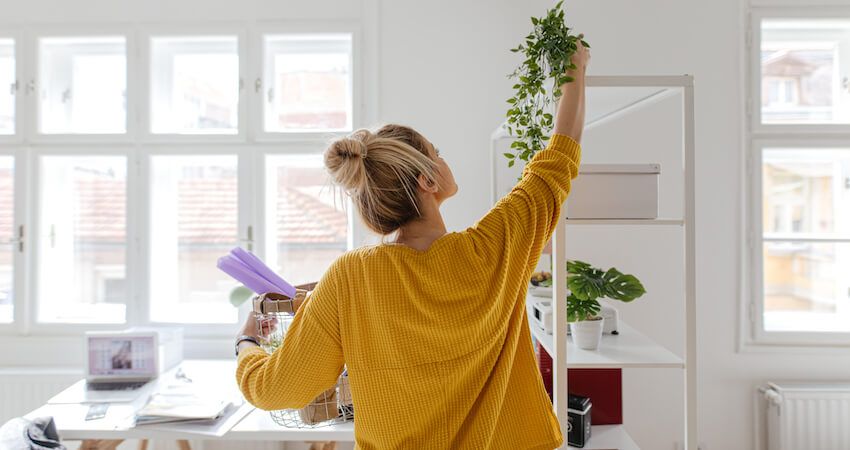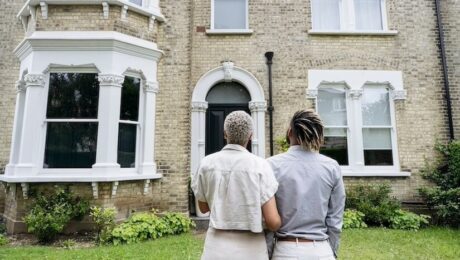Many or all of the products and brands we promote and feature including our ‘Partner Spotlights’ are from our partners who compensate us. However, this does not influence our editorial opinion found in articles, reviews and our ‘Best’ tables. Our opinion is our own. Read more on our methodology here.
Jump to
- What is a shared ownership mortgage?
- How do shared ownership mortgages work?
- Who is eligible for a shared ownership mortgage?
- How to apply for shared ownership
- How to get a shared ownership mortgage
- Who offers shared ownership mortgages?
- How much deposit do you need for a shared ownership mortgage?
- Are shared ownership mortgages more expensive?
- How much is the rent on shared ownership?
- Shared ownership staircasing – increasing your stake
- Do you pay stamp duty on shared ownership?
- Selling a shared ownership property
- What are the pros and cons of shared ownership?
- Alternatives to shared ownership mortgages
Shared ownership is a government scheme which provides the opportunity to buy a share in a property, instead of buying the whole home. Under the scheme, you take out a shared ownership mortgage to pay for the share of the property you purchase and then pay rent on what you don’t own.
Here we mainly focus on how shared ownership mortgages work in England. While shared ownership schemes are available elsewhere in the UK, there are differences in how they operate. If you want to buy outside of England, further details can be found on the other nations government websites:
- Scotland and Shared Ownership
- Wales and Shared Ownership
- Northern Ireland and Co-Ownership
Think carefully before securing other debts against your home. Your home may be repossessed if you do not keep up repayments on a mortgage or any other debt secured on it.
What is a shared ownership mortgage?
A shared ownership mortgage is a mortgage you take out with a lender when buying a share of a home using a government-backed shared ownership scheme. Because the mortgage only needs to cover the share you’re buying, it can help keep deposit requirements and monthly repayments down. However, rent and other fees for the share of the property you haven’t bought must also be paid to the landlord.
Shared ownership mortgages are sometimes called part-buy, part-rent mortgages because the scheme creates a middle ground between renting a home and buying one.
You can only get a shared ownership mortgage on new-build homes or an existing property that is up for sale and is already part of a shared ownership programme.
How do shared ownership mortgages work?
Under shared ownership rules you can buy an initial share of between 10% and 75% of a home. The size of the shared ownership mortgage you need will depend on the share you’re buying relative to the market value of the property and the size of your deposit. The minimum deposit required is usually between 5% and 10% of the value of the share you’re purchasing.
So if you want to buy a 25% share in a £200,000 home, you’ll need to raise £50,000 to secure your stake in the property. A 10% deposit means putting down a deposit of £5,000, and leaves you needing a shared ownership mortgage for £45,000 to cover the rest.
Crucially, because you’re only buying a proportion of a home, the size of the mortgage and your deposit will be smaller than if you were buying the property in its entirety.
» MORE: Is it better to rent or buy?
Who is eligible for a shared ownership mortgage?
You may be eligible for shared ownership in England if you:
- have a household income of under £80,000, or £90,000 if you live in London
- cannot afford the deposit and mortgage repayments for a home suited to your needs.
You must also either be:
- a first-time buyer
- a previous homeowner who can’t afford to buy now
- an existing homeowner who wants to move but can’t afford a property that meets your needs
- forming a new household, perhaps after the end of a relationship
- already in shared ownership but want to move.
Some shared ownership homes may only be available if you live or work locally, or have another connection to the area. Serving and past members of the armed forces may also have priority if there are several offers on a shared ownership home at the same time. If you’re aged 55 or over, you can buy up to a 75% share through the Older Persons Shared Ownership (OPSO) scheme. You won’t have to pay rent if you own a 75% stake.
How to apply for shared ownership
Applying for a shared ownership scheme involves:
Finding shared ownership properties
Housing associations, local councils, and homebuilders advertise shared ownership homes for sale on their websites and at property developments. Most property listing websites will show them too. If you’re not sure where to begin, there is a government website to help buyers outside of London find organisations selling shared ownership properties in your local area. If you live in the capital, there is a dedicated Home for Londoners website to help your search.
Contact the relevant organisations
If you register your interest with a selling organisation it will help check your eligibility for the scheme and whether you can afford a home. This is likely to involve sharing details of your income, potential budget, credit score and preferred area to live in. The organisation can then send you information about the various shared ownership homes for sale and arrange viewings.
Reserve your property
If you find a home you like, and you’re eligible for the scheme, you can pay a fee to reserve it. The fee could cost up to £500, but it prevents others from reserving the property for a set period of time. If you eventually buy the property, the fee is subtracted from the final amount you pay; if you don’t proceed, it may not be refunded. Check with the landlord of the property to clarify this and how long it will be reserved for before going ahead.
How to get a shared ownership mortgage
Pass the eligibility checks for shared ownership and you can start thinking about getting a shared ownership mortgage.
Applying for a shared ownership mortgage is similar to how you’d make any mortgage application.
A mortgage lender will want to examine all of the information that you’ve just used to prove your eligibility for shared ownership, including your income, outgoings, existing debts and credit history. When calculating your monthly expenditure it will also account for how much you’re likely to pay in rent, service charges and ground rent for the property.
Lenders use these details to decide whether you can afford a mortgage and how much you can borrow
» MORE: Mortgage borrowing calculator
Who offers shared ownership mortgages?
Some banks and building societies offer shared ownership mortgages, but some don’t.
Always check with a lender if they offer mortgages under the scheme and be upfront about your intentions. A mortgage broker may be able to help if you’re struggling to find lenders offering shared ownership mortgages or one who is willing to lend to you.
» MORE: Best mortgage lenders
How much deposit do you need for a shared ownership mortgage?
You’ll usually need at least a 5% or 10% deposit – calculated on the value of the share of the property that you’re buying – if you want to get a shared ownership mortgage. Generally, the larger the deposit you can put down, the more deals and the better the mortgage rates you may get.
» MORE: How much deposit do you need for a mortgage?
Are shared ownership mortgages more expensive?
Shared ownership mortgage rates can be a little higher than on an equivalent standard residential mortgage. This may be due to the additional risk lenders feel they are taking on with this type of mortgage. Because fewer lenders offer shared ownership mortgages, the need for lenders to compete on rate isn’t necessarily as important as with first-time buyer mortgages, for instance.
Taking the time to weigh up the options and finding the best shared ownership mortgage for you is key.
» MORE: See current mortgage rates
How much is the rent on shared ownership?
As well as paying your mortgage, you must pay rent to the housing association, local authority or developer that owns the share of the property you’re not buying. The maximum rent you can be charged on a new-build shared ownership property is 3% of the value of the share you haven’t bought. However, most landlords charge around 2.75%.
As an example, if you have a 40% share in a £200,000 home, rent at 2.75% on the remaining £120,000 will equate to £3,300 for a year, or £275 per calendar month.
If you’re buying a resale shared ownership home, in the first instance the rent payable will be the same as that paid by the previous owner.
With any type of shared ownership property, landlords can review your rent in line with the terms set out in your lease – typically this will happen annually. How much you pay may go up but it won’t fall. The amount it could rise is linked to inflation. The only way your rent could fall is if you buy a bigger share of the property.
There will likely be other costs associated with renting to pay too, such as service charges and ground rent. These fees should always be considered alongside the mortgage and rental payments when working out if shared ownership is financially viable for you.
Shared ownership staircasing – increasing your stake
Whatever the initial stake you take in a property, you have the right to increase the share you own in the future – this is called staircasing and should mean you pay less rent.
It may be possible to increase your share by as little as 1% at a time if you first bought the property after April 2021. It may also be possible to buy extra shares of 5%, 10% or more at a time. Check your lease and with your landlord to find out exactly when you can staircase and the additional share you can take. There’s no obligation to staircase, but if you do, the cost of the additional share you want to buy will be based on the value of your property at that time.
Most shared ownership properties allow buyers to staircase up to 100% ownership, meaning you own the home in its entirety and will have no rent to pay. One exception may be if you buy in a ‘designated protected area’, which only allows up to a maximum of 80% ownership. Another is if you use the Older Persons Shared Ownership scheme, available if you’re aged 55 or over, through which the maximum share allowed is 75%.
But even if you staircase to full ownership, you may still need to pay a service charge to cover the maintenance of communal areas, such as shared stairways and gardens, and ground rent to whoever owns the freehold of the property. This is because all shared ownership homes are sold on a leasehold basis.
» MORE: What is the difference between freehold and leasehold?
Do you pay stamp duty on shared ownership?
Stamp duty is payable on shared ownership homes, but there are choices you can make which can affect how much you may have to pay and when. You can decide between:
- Making a single one-off payment covering the stamp duty payable on the entire value of the home. Known as ‘market value election’, you pay everything upfront, even though you only buy a share of the property. However, you won’t have to pay any further stamp duty if you staircase to a higher share ownership in the future.
- Paying in stages, so you only pay stamp duty based on the share that you’re buying. This can help keep initial costs down, but you’ll need to pay again if you increase your share above 80% in the future. If house prices rise, you could end up paying more stamp duty this way. But if you intend to keep below the 80% threshold, this may be the better option.
» MORE: What is happening with UK house prices?
When you might pay no stamp duty
If you’re taking your first step onto the property ladder, and qualify for first-time buyer stamp duty relief, you’ll pay no stamp duty if you’re buying a property – or a share of a property – for £425,000 or less. If you’re not a first-time buyer, you’ll pay in line with the normal stamp duty rates. This means you’ll only avoid stamp duty if the property, or the share you’re buying, is valued at less than £250,000.
» MORE: Stamp duty calculator
Selling a shared ownership property
If you wish to move, you can sell a shared ownership property at any time. If you staircase up to owning 100% of the property, you can normally sell it on the open market, using an estate agent, as you would for most homes.
If you don’t own the property outright, you’ll need to inform your landlord that you wish to sell. Depending on the terms of the lease, they will then have either four, eight or 12 weeks in which to try to sell the property themselves. If they’re unsuccessful, you’re then free to try to sell your share yourself using an estate agent or privately on the open market.
You’ll need to sell to another shared ownership buyer if you only own a share of the property. Even if you do own your property outright, it’s sensible to still check with the landlord before you put it on the market, in case there are any restrictions.
What are the pros and cons of shared ownership?
There are some definite benefits to shared ownership but important considerations to think about too.
Advantages of shared ownership
- It can help you get on the property ladder if you can’t afford to buy outright.
- You may buy much quicker than if you had to save up to buy outright.
- There is the opportunity to gradually increase the share of the property that you own.
- If you decide to move, you could make a profit, and have equity to put towards a new property, if house prices have increased since you bought.
- If you’re a current or past member of the armed forces, you may get priority over other groups for shared ownership schemes.
Disadvantages of shared ownership
- You’ll need to meet the shared ownership eligibility requirements.
- Where you end up living may be dictated by where shared ownership properties are available.
- Rent will be payable on top of your mortgage payments, unless you staircase to 100% ownership.
- Your property will be on a leasehold, which means paying service charges and ground rent.
- Repair and maintenance costs are likely to fall on you, regardless of the size of the share you own.
- Shared ownership mortgage rates may be higher than on traditional mortgages.
- Staircasing to increase your ownership could get progressively more expensive if your property value rises.
- Selling up isn’t always straightforward, particularly if you don’t have 100% ownership.
- You can’t sub-let the property to someone else unless you own it outright (you may be able to rent out a room as long as you also still live there).
- Despite owning a stake in the property, there is still a risk of eviction if you don’t pay the rent, or break other rules.
Alternatives to shared ownership mortgages
If a shared ownership mortgage isn’t the right option for you, one of these alternatives could help.
First Homes scheme
Under the First Homes scheme, eligible first-time buyers and key workers in England have the opportunity to secure a new-build property at a 30% to 50% discount.
Right to Buy mortgages
If you’re a council tenant in England, the Right to Buy scheme may mean you can buy the home where you live at a reduced price. Similar schemes are available in Scotland, Wales, and Northern Ireland, and there’s a Right to Acquire scheme for housing association tenants.
Help to Buy
The Help to Buy equity loan scheme, designed to help home buyers with smaller deposits, is still available in Wales, but not in England, Scotland and Northern Ireland.
Forces Help to Buy
Under the Forces Help to Buy Scheme, eligible Armed Forces personnel can get an interest-free loan to help buy a home.
Lifetime ISAs
If you’re saving for a deposit, a 25% bonus is available from the government if you put your funds into a Lifetime ISA. Up to £4,000 can be saved into these tax-free accounts annually, meaning there’s the potential for a £1,000 bonus every year.
Image source: Getty Images
Dive even deeper

Where is the Cheapest Place to Rent in the UK?
Knowing the cheapest places in the UK to rent can be a good starting point if you’re looking for somewhere affordable to live. Here’s where rents are lowest right now.




